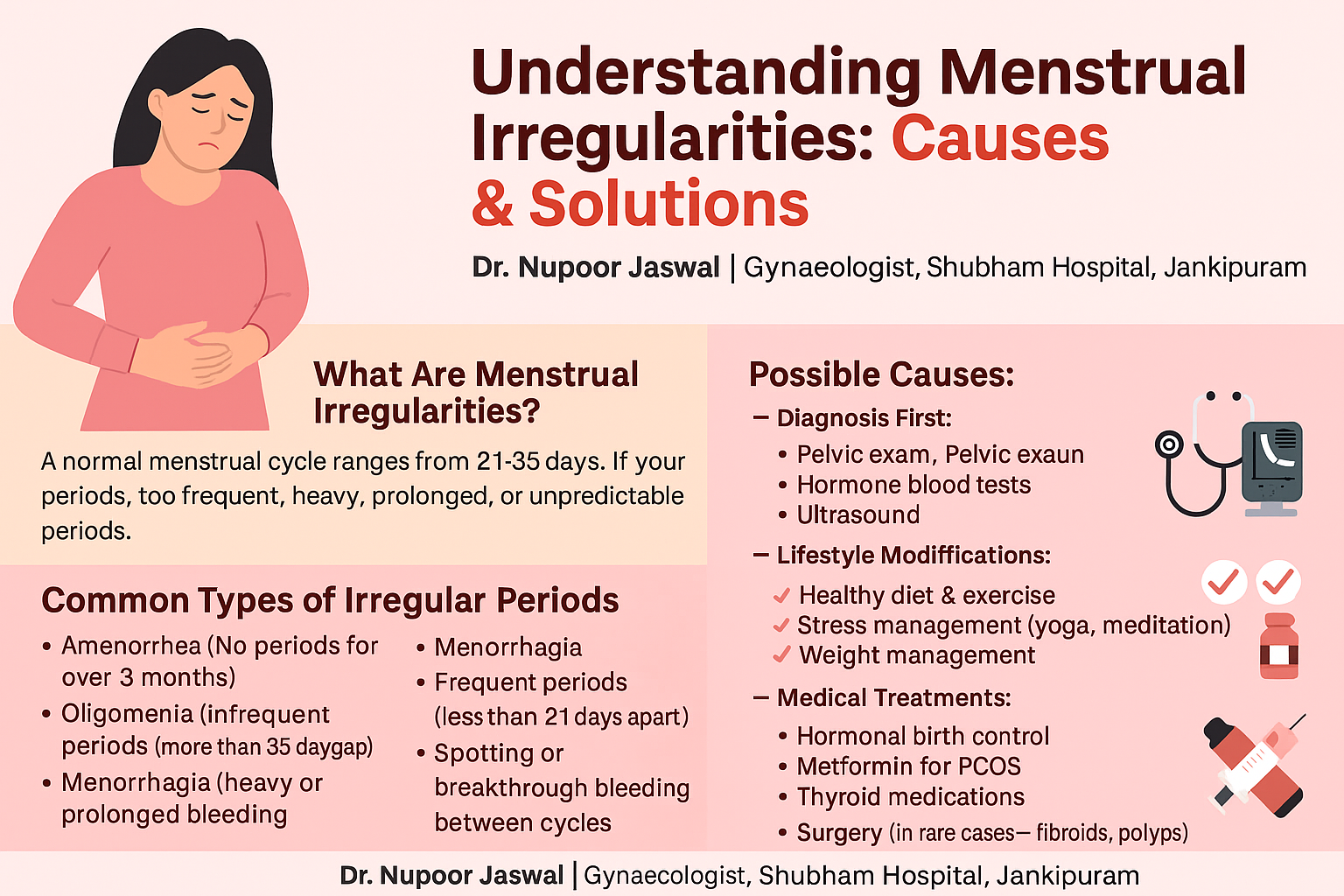🌸 What Are Menstrual Irregularities?
A normal menstrual cycle ranges from 21 to 35 days. You may have menstrual irregularities if your periods are too frequent, infrequent, heavy, long, or unpredictable.
⚠️ Common Types of Irregular Periods:
- Amenorrhea: No periods for 3 or more months
- Oligomenorrhea: Infrequent cycles (greater than a 35-day break)
- Menorrhagia: Excessive or prolonged bleeding
- Polymenorrhea: Frequent cycles (less than 21 days apart)
- Spotting: Bleeding from breakthrough bleeding outside of your cycles
🧬 Possible Causes:
- Hormonal imbalance (estrogen & progesterone)
- Polycystic ovary syndrome (PCOS)
- Thyroid disorder
- Stress or anxiety
- Weight loss or eating disorders
- Uterine fibroids or polyps
- Perimenopause or menopause
- Pregnancy or miscarriage
- Birth control changes
- Chronic conditions (i.e., diabetes or celiac disease)
💡When Should You See a Doctor?:
- You haven't had a period in 3 months or more
- Heavy bleeding (soaking a pad hourly)
- Spotting between cycles
- Severe cramping, nausea, or fatigue
- You have signs of pregnancy but are bleeding
✅ Solutions & Treatments:
🔹 Diagnosis First:
- 🩺 Pelvic examination, hormone blood testing, ultrasound
🔹 Lifestyle Modifications:
- ✔️ Exercise & healthy eating
- ✔️ Managing stress: (yoga, mindfulness/meditation)
- ✔️ Managing weight
🔹 Medical Treatments:
- 💊 Hormonal contraception
- 💊 Metformin for PCOS
- 💊 Thyroid medications
- 🩺 Surgeries may be dignosis related and are very rare (fibroids, polyps)
“Listen to your body – menstrual irregularities are not just 'normal changes'. Early diagnosis means better care.”
—
